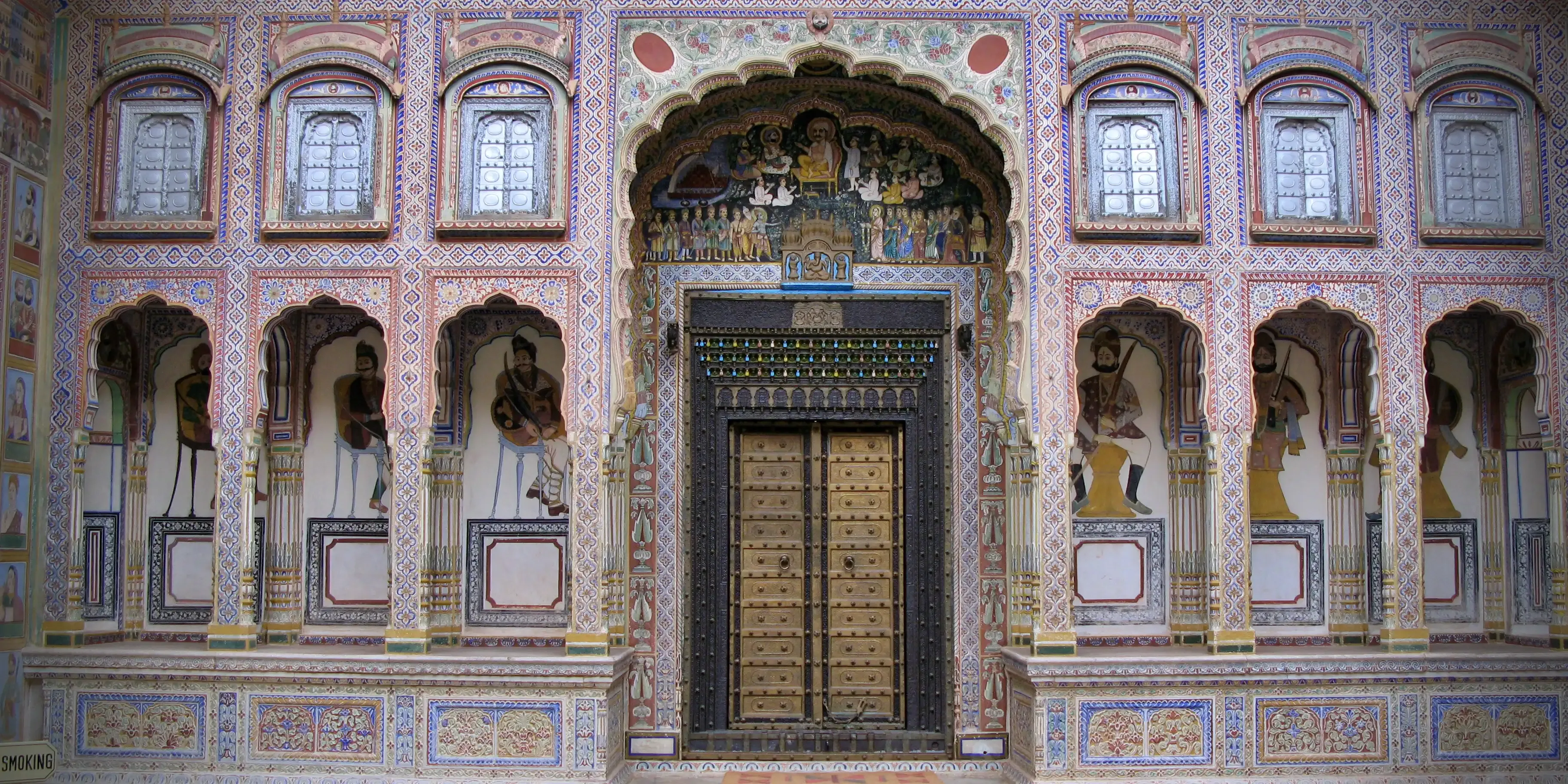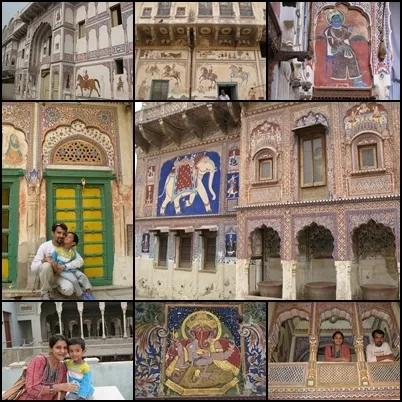
October 29th - We took a SpiceJet flight to Jaipur, but unfortunately, we couldn’t make it on time due to technical problems and traffic congestion, leaving us stranded on the flight for 3 hours. Finally, we reached our pre-booked Hotel Madhuban by prepaid taxi around 22:00.
Upon our arrival, the driver remarked, “kya bekar hotel liya hain sir,” causing a lump in my throat as I had made all the bookings. It had been a laborious and monotonous task scouring website after website, jotting down details and prices. With a heavy heart, we checked in but found that everything was as advertised in the photos online. We arranged for a car-hire the next day for a Shekhawati day trip.
October 30th - At 7:00 am, a nice, clean Ambassador was provided to us, and we embarked on our day trip to the withering Land of Kuber. Along the way, we enjoyed hot and tasty paranthas and idlis for breakfast from a dhaba. The journey took around 3 hours to reach that region. We made a circuit starting from towns like Fatehpur, Mandawa, Churi-Ajithgarh, Dundlod, and Nawalgarh, before returning to Jaipur.
Shekhawati is renowned worldwide for its painted havelis and intricate fresco paintings, depicting mythological and historical themes. During the Marwari’s initial foray with the Maharajahs and Thakurs, they discovered that they could amass wealth by establishing businesses in distant centers. During British rule, their prosperity soared even higher as they expanded their business to places like Calcutta, Mumbai, and other influential pockets. Tradition dictated that whoever succeeded would return to build four things - haveli, baoli (well), mandir, and dharamshala. With the wealth they accumulated, they ordered lavish havelis back home, adorning them with the now-iconic Shekhawati fresco style. The spirit of competitiveness led to excess, as the wealth of the owner was reflected in the haveli’s lavish decorations.
Prominent business groups today, such as Birla, Goenka, Singhania, and Poddar, hail from the Shekhawati region, which has emerged as an open art painting gallery, meticulously preserving its historical heritage. Havelis are graced by large wooden doors at the entrance, with intricate wooden carvings and elegant brass iron fittings that symbolize the owner’s wealth. The ground floor is often recessed, allowing balconies to extend over the street. Latticed windows on the balconies and courtyards allowed women to catch a glimpse of the men’s world. The facades, gateways, courtyard walls, parapets, and ceilings were adorned with frescoes, all created with natural colors. For example, the color yellow was obtained by evaporating the urine of cows fed exclusively on mango leaves for ten days. The resulting paste was rolled into small round ‘gayagolis’ and produced a brilliant yellow when diluted with water.

The ‘Fresco Buono’ technique was employed in creating these paintings. In this method, only a part of the wall was plastered at a time with three layers of very fine clay. Sketches were made on the walls by scratching outlines into the wet plaster with a sharpened stick. These frescoes remained vibrant and unfaded for nearly as long as the buildings themselves stood. A gum made from a local plant or a derivative of camel fat served as the crucial binding agent.
We explored several attractions in the region, including Nadine la Prince at Fatehpur, which was bought and restored by a French artist named Nadine. In Mandawa, we visited Castle Mandawa, as well as Sneh Ram Ladia, Gulab Rai Ladia Haveli, and JhunJunuwala Golden painted haveli. We couldn’t visit Murmura and Double Goenka haveli as they were closed. In Churi Ajithgarh, we explored Sheonarayans Haveli, while in Dundlod, we visited Goenka Haveli. In Nawalgarh, we explored Poddar Haveli.
The best way to visit this region is by having your own transport, but be prepared to do a fair amount of walking once you arrive at a particular destination. Consider hiring a guide (negotiable) to show you around. While the paintings and architecture are undoubtedly beautiful, after a day of craning your neck, all the paintings may start to look alike. There’s not much to see after sunset as the artificial lighting is inadequate to appreciate the intricate painting details.
We skipped lunch to ensure we covered our itinerary and had an early dinner on our way back to Jaipur.
